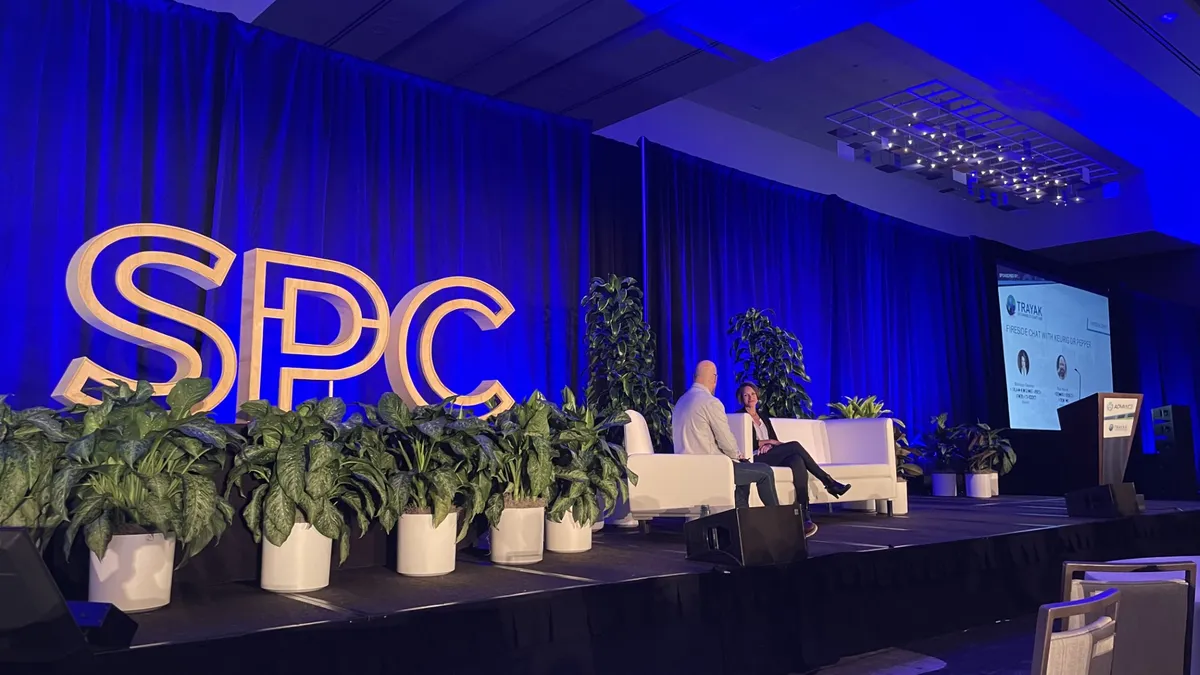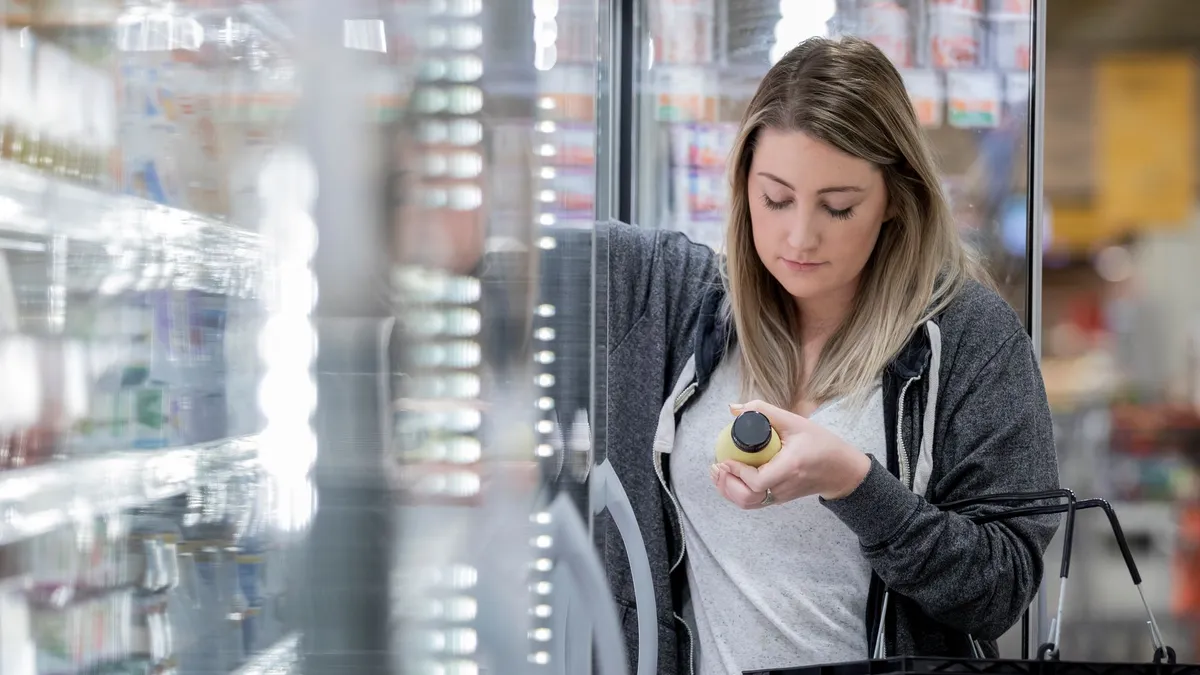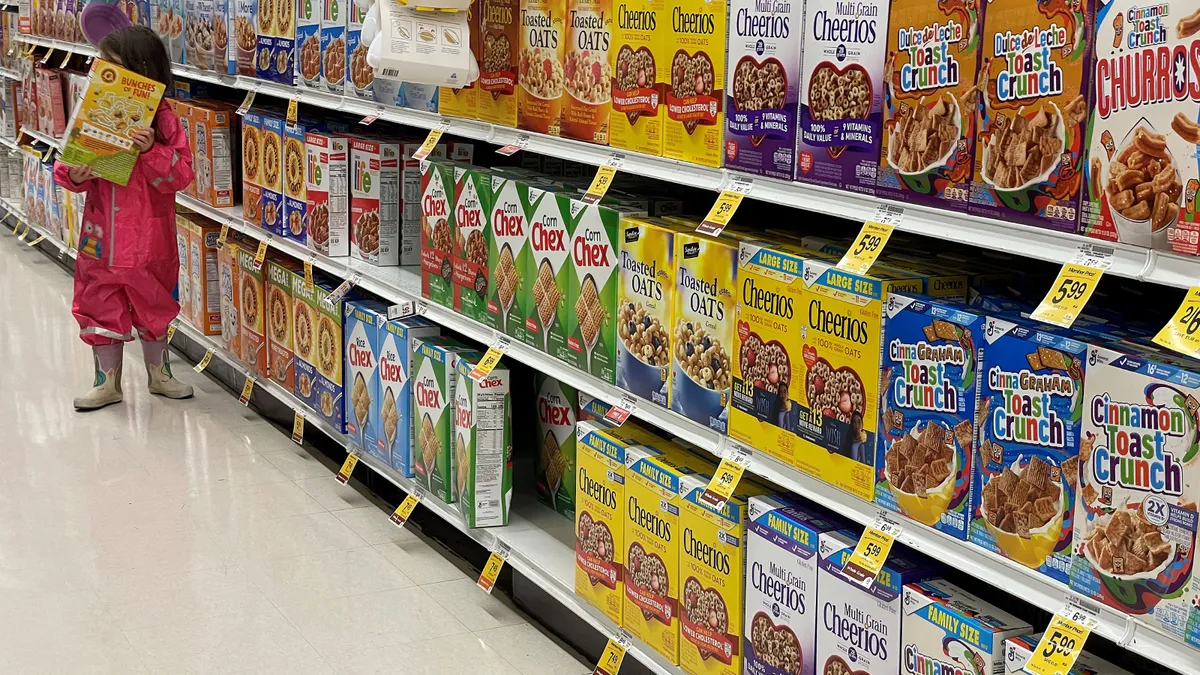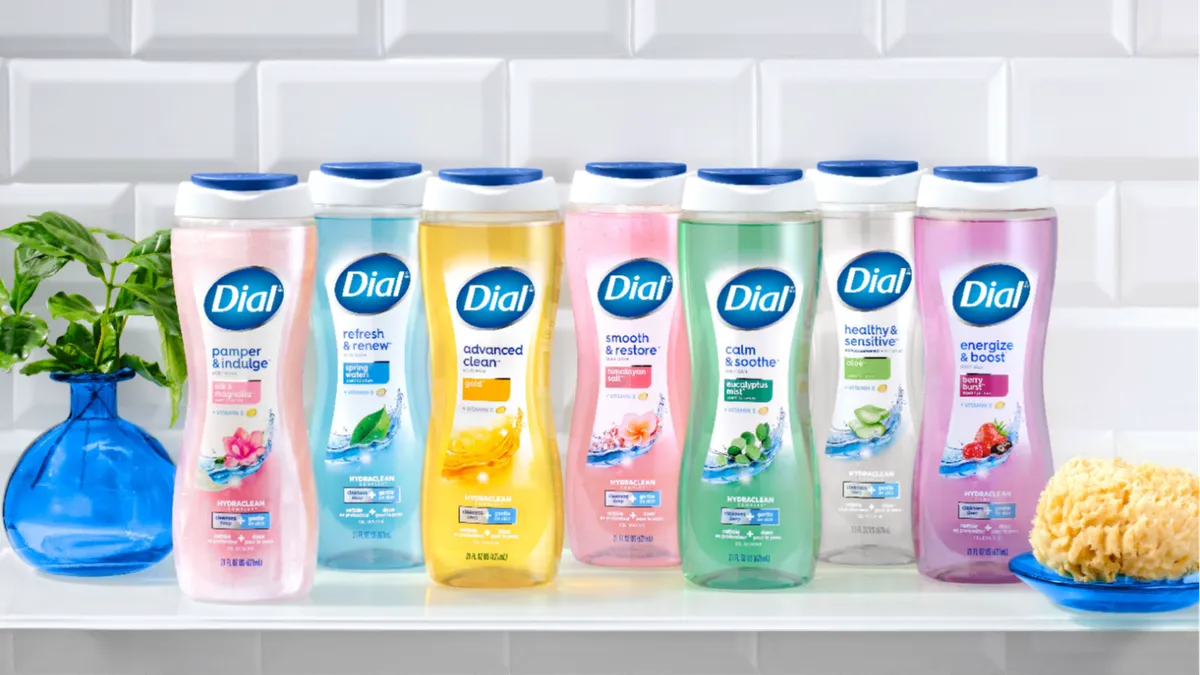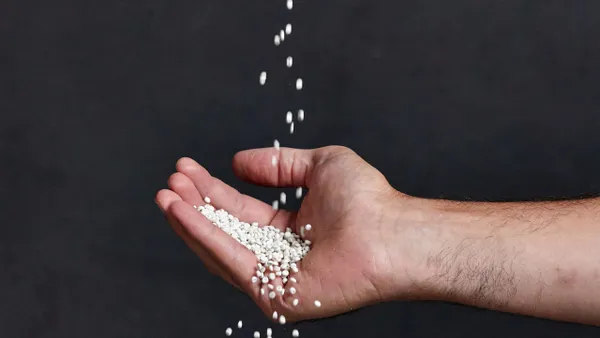Compostable packaging is on the rise, with substantial growth expected in the years ahead. Figuring out how much of it is actually suitable for composting, and how to ensure that happens, remains a work in progress.
Speakers at multiple sessions during the recent SPC Advance event in Boston said this growth is being driven by voluntary commitments, such as the U.S. Plastics Pact, and upcoming laws, such as California’s extended producer responsibility system. Further regulatory requirements are anticipated in Europe, and possibly in the U.S., which could add even more momentum to the market.
Some packaging is seen as an easy opportunity for compostability. Tea bags and coffee pods were described as prime examples of products that are particularly relevant to composting systems.
"You can't think of a more perfect product that can go right into the composting bin,” said John Roumanis, vice president of marketing and R&D at Mother Parkers Tea & Coffee. “The coffee is so highly desirable as part of the composting stream that every single ground that's lost is a shame.”
Multiple major brands have pursued compostable coffee pods, as seen with an announcement by JDE Peet’s earlier this year. Ensuring the compostable pods can still meet the same performance and freshness standards will be key.
"It’s not enough to make it compostable, the taste is what matters,” said Steve Davies, vice president of performance packaging at NatureWorks.
Davies also noted a trend of brands possibly shifting their focus from recyclable coffee pods to compostable ones. For example, Nestlé debuted an aluminum pod that could be accepted in curbside recycling streams in 2019 and then started piloting a home-compostable pod last year.
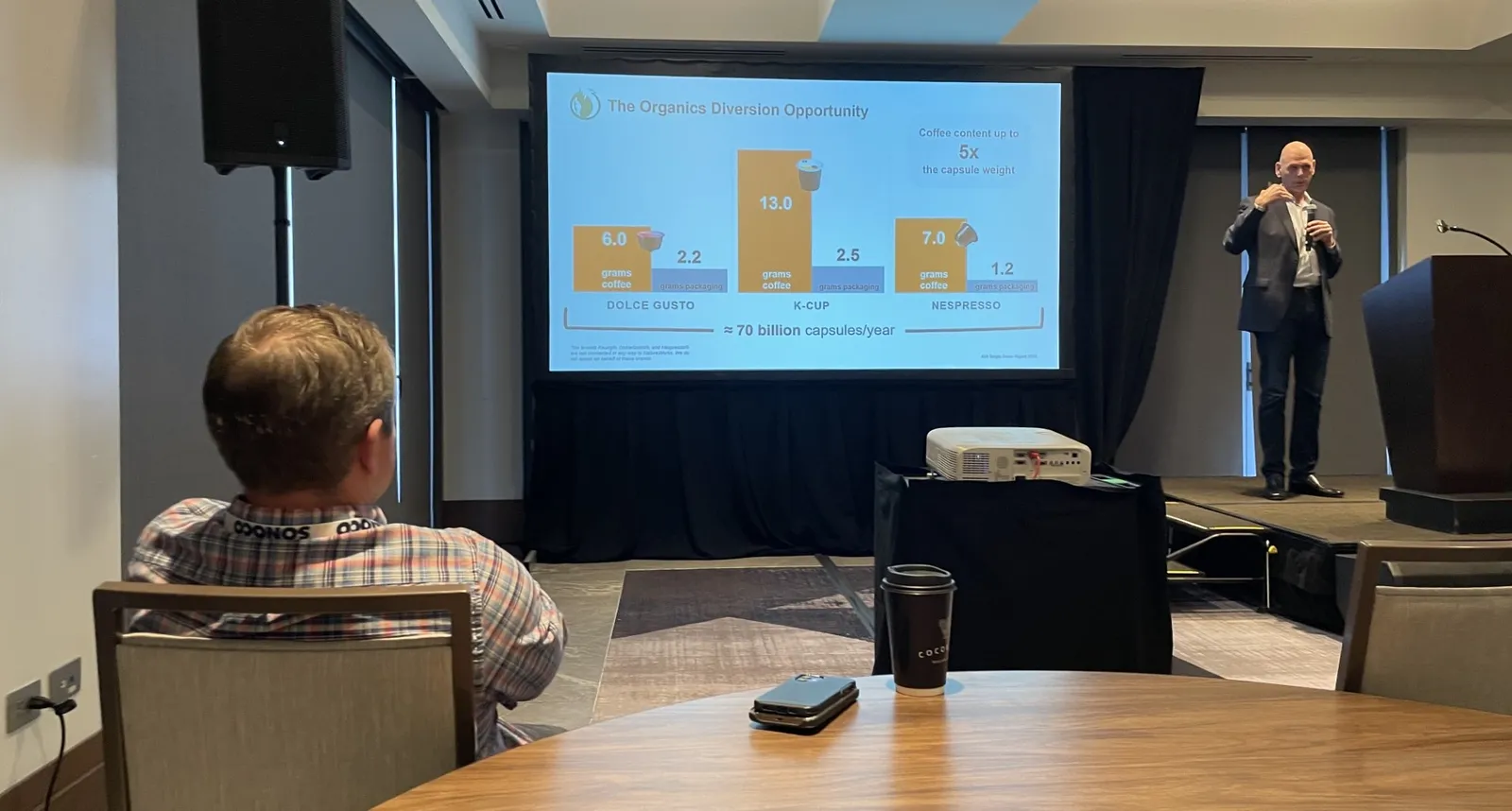
Keurig Dr Pepper, which settled a class-action lawsuit last year over whether its own pods were widely recyclable, is also pursuing a compostable option.
"The intent is for that compostable solution to be both industrial and home compostable,” said Chief Sustainability Officer Monique Oxender, noting the product has received certain home and industrial compostability certifications. "But we're still curious, we want to learn more, so we're doing more testing in a wider variety of composting environments."
Such testing questions are driving research at Clemson University in South Carolina, where the Sonoco Foundation funds the Food Research Excellence for Safety & Health initiative. Anne Barr, executive director of Sonoco FRESH, outlined plans to scale up the university’s composting system to become a full-scale testing operation. The campus is unique in having a MRF and composting operation, which allows for more in-depth packaging tests. This is considered especially important as interest and investment in bioplastics keeps growing.
"If you look at the landscape, there are very, very few plastics out there that can be certified as compostable, so this is currently a really wide open space,” said James Sternberg, an assistant professor of sustainable packaging at Clemson.
Sternberg said the goal is “creating a bridge from the lab to the larger scale system” to get a better understanding of biodegradability in various settings and bring down the cost for testing. Beyond meeting their sustainability targets, packaging companies also want to help alleviate the perception among some composters that these products are more trouble than they’re worth.
"There's just such a huge issue with contamination,” said Barr, adding that "composters don't want contaminated feedstock for obvious reasons.”
This issue was raised in a separate session by an official from the Massachusetts Department of Environmental Protection. The agency recently expanded its disposal ban for organic material from certain commercial establishments and is aware of the challenge that compostable packaging may pose in the resulting organics recycling systems.
John Fischer, deputy division director for solid waste materials management at MassDEP, cautioned against “unintended consequences” from compostable packaging ending up in the curbside recycling stream or complicating organics recycling operations.
"We have to be careful that we're being very clear about what's recyclable and what's compostable,” he said, adding that a successful environmental outcome for this packaging also hinges on one key factor. "It only works if it's composted. So if we're taking compostable packaging and throwing it in the trash we're not gaining a lot by doing so.”
More states are advancing labeling laws to standardize compostable claims, and brands continue to pursue certifications from various groups, but the issue is complex.
"You can have the best industrially-compostable package, but what happens if that goes into a backyard?” said Barr, citing concerns from brands about their logos persisting and being perceived as litter.
In some cases this may be driving the heightened interest in home compostability certification, even if consumer follow-through may be limited.
"Right now we have often leading brands tell us this, they know their structure's not going to be home composted. Nine out of 10 consumers aren't going to do it,” said Davies, speaking in a separate session. “But what the brands are trying to responsibly address is that if there's leakage ... that it not be persistent.”
A recent survey from BPI and Closed Loop Partners’ Composting Consortium found many consumers are still confused by labeling on compostable products, with a notable number of respondents saying they thought it would be acceptable to either put this packaging “in the recycling” or “anywhere outside.” That same survey also found that 44% of respondents said the correct option would be home composting, and 52% said curbside organics collection.
That latter point is seen as a bright spot by Roumanis and Davies, both of whom talked up the growing prevalence of curbside organics collection in North America and their desire to see more government investment in that area. BioCycle’s latest research, which found the number of U.S. households with access to food waste collection grew by 49% since 2021, was cited as a positive sign. BioCycle also found the number of U.S. composters accepting compostable packaging is on the rise.
Further complicating the decision to make a product compostable in home or industrial settings, Roumanis reminded the audience about how quickly coffee’s freshness declines once it’s exposed to air. This in turn could give an edge to more resilient industrially-compostable options, which brands might also prefer because those products could be accepted in a curbside program.
“The barrier properties that are enabled in the types of materials that are industrially compostable do keep the freshness longer, and thereby keeps the consumer happy and keeps the consumer engaged,” he said. “The closer the compostable solution is to the existing non-compostable solution, the more adoption it will have by consumers."



